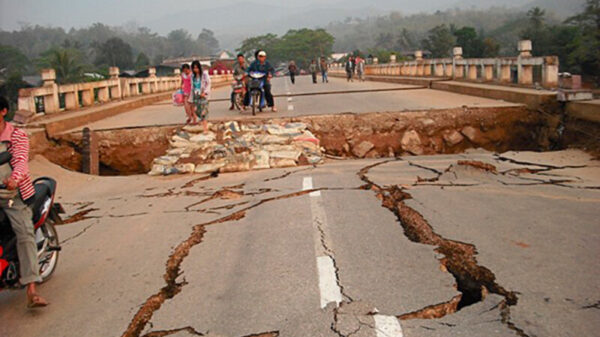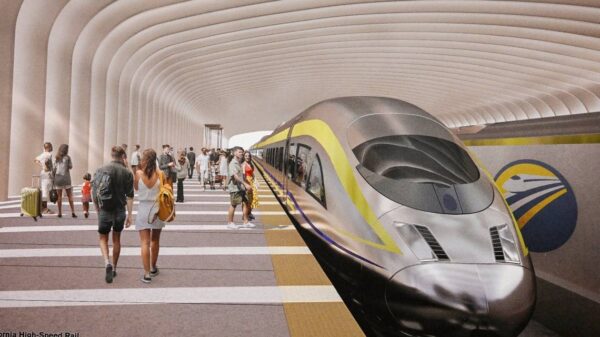California High-Speed Rail Project Advances Amid Funding Challenges
California’s ambitious high-speed rail project is continuing to make progress, particularly in the Central Valley, where significant construction milestones have been reached. The project aims to connect major cities across the state, enhancing transportation infrastructure and providing a sustainable, fast alternative to current modes of travel. Despite the substantial progress made in the Central Valley, the project faces ongoing funding challenges, particularly for the southern and northern extensions, which have sparked debates about the future of the high-speed rail network. As the project moves forward, California’s high-speed rail initiative continues to be a focal point of discussion, not only for its potential impact on transportation but also for its broader implications on the state’s economy, environment, and urban development.
The Vision for High-Speed Rail in California
The high-speed rail project was conceived with the vision of creating a fast, environmentally friendly transportation network that would connect key urban centers in California, from the Bay Area to Southern California. When completed, the rail system will reduce travel times significantly, enabling passengers to travel between San Francisco and Los Angeles in about two and a half hours, a trip that currently takes over six hours by car or train. This ambitious undertaking aims to ease congestion on highways and airports, reduce carbon emissions, and provide a sustainable solution to California’s growing transportation demands.
In addition to providing an efficient alternative to long-distance travel, the high-speed rail project is designed to stimulate economic growth, create jobs, and promote regional development. As the first phase of construction progresses, particularly in the Central Valley, the project is already providing thousands of jobs in construction, engineering, and related industries. The high-speed rail is also expected to transform cities along the route, with new development opportunities in areas like Fresno and Bakersfield, where transit hubs and stations will be located.
Progress in the Central Valley
Construction in the Central Valley has made significant strides, with work already underway in places like Fresno, Madera, and Kings County. This phase of the project focuses on the initial 119-mile stretch of the rail line, which will eventually form part of the larger network connecting major metropolitan areas. The Central Valley was chosen as the starting point for construction due to its central location and relatively flat terrain, which makes building the rail line more feasible in the early stages.
The Central Valley portion of the high-speed rail project is expected to provide critical insights into the challenges and logistics of building high-speed rail infrastructure, especially given the region’s agricultural economy and existing water and land-use constraints. While progress has been made in terms of railbed construction, station design, and environmental studies, the project is still working through various hurdles related to land acquisition, environmental mitigation, and coordination with local governments.
Funding Challenges and Political Debate
Despite the success in the Central Valley, the high-speed rail project continues to face significant funding challenges, particularly for the southern and northern extensions of the rail line. Originally designed to connect the Bay Area and Southern California, the project’s total cost has ballooned, with estimates now exceeding $80 billion. The scope of the project has led to concerns about its overall feasibility and sustainability, especially in light of the state’s budget constraints and competing priorities.
Funding for the southern extension, which would connect the Central Valley to Southern California, has been especially contentious. Some lawmakers and stakeholders argue that the project should be completed in phases, with the Central Valley portion operational first, while others advocate for a more comprehensive approach to ensure that the full vision of the high-speed rail system is realized. Additionally, the northern extension, which aims to link the Bay Area with the Central Valley, faces its own set of challenges, including the high cost of construction in densely populated urban areas.
Environmental and Social Impacts
The high-speed rail project has been hailed as an environmentally friendly solution to California’s transportation problems. By providing an efficient alternative to cars and planes, the rail line is expected to reduce carbon emissions and contribute to the state’s ambitious climate goals. California’s high-speed rail will also help reduce congestion on major highways like Interstate 5, which is frequently congested due to the volume of cars traveling between Northern and Southern California.
However, the project has faced significant opposition from some environmental and community groups, who argue that the construction and eventual operation of the rail system will have negative consequences on the environment and local communities. These concerns include the potential destruction of farmland, the disruption of wildlife habitats, and the displacement of communities in some areas along the rail route. To address these concerns, the state has implemented various mitigation measures, including wildlife corridors, agricultural preservation programs, and community outreach efforts.
The Role of Private Investment and Federal Support
To overcome the funding challenges, the California high-speed rail project is increasingly looking for private investment and federal support. The state has already secured some federal funding for the project, including grants from the U.S. Department of Transportation’s High-Speed Rail Program, but more funding is needed to complete the system. The project’s ability to attract private investment will play a crucial role in ensuring its long-term sustainability and reducing the burden on taxpayers.
Private investment could come in various forms, including public-private partnerships (PPPs), where private entities contribute to the construction and operation of the rail system in exchange for a share of the revenue. Additionally, the high-speed rail project may benefit from federal infrastructure packages and climate-related funding initiatives, which align with the project’s sustainability goals. Federal support for high-speed rail could also help California set a precedent for other states to invest in similar infrastructure projects, helping to establish a national network of high-speed rail systems.
Public Support and Community Impact
Despite the challenges, the high-speed rail project has garnered strong public support, particularly from residents in cities that stand to benefit from the new transportation system. In Central Valley communities, the promise of faster, more reliable travel options has generated enthusiasm, with local leaders seeing the project as a vital economic boon for their region. The creation of jobs, new infrastructure, and opportunities for local businesses has made the project more appealing, especially in areas that have historically been underserved by transportation options.
However, opposition remains in certain parts of the state, particularly from residents who are concerned about the project’s cost, its impact on local communities, and the delays in its timeline. The ongoing debate over the high-speed rail’s future reflects the broader challenges that come with large-scale infrastructure projects—balancing environmental concerns, community impact, and financial feasibility.
Looking Ahead: The Future of High-Speed Rail in California
As construction on the Central Valley portion of the high-speed rail project continues, the future of the entire network remains uncertain due to ongoing funding challenges and political debates. However, the progress made so far signals a commitment to the project’s long-term goals and its potential to reshape transportation in California. The next steps will depend on securing additional funding, addressing concerns from stakeholders, and ensuring that the project can be completed in phases that meet the needs of California’s diverse population.
While the path forward remains complex, the California high-speed rail project is an important step toward sustainable, efficient, and modern transportation in the state. If successful, it could serve as a model for other states and countries seeking to improve their transportation networks and address climate change through innovative solutions.
Conclusion: California’s High-Speed Rail Initiative Faces a Crucial Turning Point
In conclusion, the California high-speed rail project continues to advance, with significant progress in the Central Valley. However, funding challenges and political debates about the southern and northern extensions of the system pose significant hurdles for the long-term success of the initiative. As the project moves forward, the focus will be on securing necessary funding, addressing community concerns, and ultimately delivering a transformative transportation solution for California. The high-speed rail project remains a bold vision for the future, with the potential to reshape the state’s transportation landscape and set a precedent for sustainable, high-speed rail systems across the nation.




































